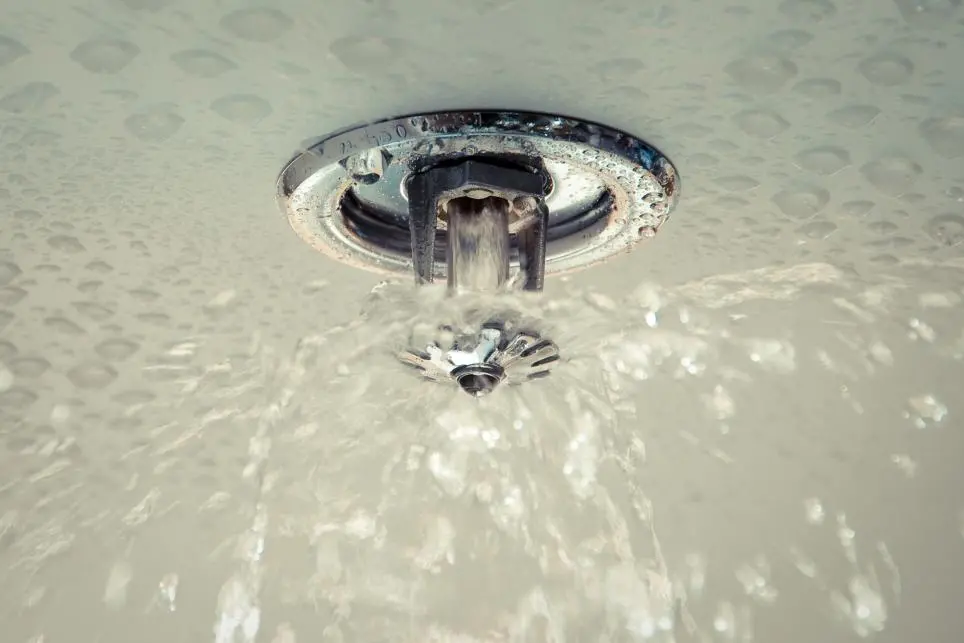When my sister-in-law was planning a new home, she told me about the endless list of options, from granite countertops and tile backsplashes to kitchen islands and smart appliances.
Given my job, I asked whether she was considering an automatic fire sprinkler system to protect her new home and everything inside.
She wasn’t.
I’ve had that conversation many times with friends and family, and the answer is usually the same.
It’s a subject that’s important to me because I’ve been a volunteer and professional firefighter for more than 20 years.
As a child, I always wanted to know where the firetruck was going, so after college I decided to find out by joining the local volunteer fire company. That little kid’s excitement turned into an adult’s somber knowledge of how fire can devastate a family, even when no lives are lost. Precious keepsakes, clothing, and everything people work a lifetime to collect can suddenly go up in smoke, quite literally, and they’re left to deal with the aftermath.
Between being a firefighter and my “day job” at UL Standards & Engagement focusing on fire safety and protection, I’ve learned sprinklers can spare families some of that grief.
The first line of defense against fire is prevention — avoiding situations that could easily start a fire, like smoking in bed or walking away from the stove, and choosing products that meet safety standards like those set by ULSE.
The next is detection, like smoke alarms. Smoke alarms are present in 80% of U.S. households, according to ULSE surveys, but only 32% say they are following recommended monthly testing guidelines. Ensuring that detection is working is critical to your safety.
Traditionally, the third element is suppression — the fire department putting out the fire. At ULSE, we see containment in the form of sprinklers as a crucial component that can save lives and property between the smoke alarm going off and firetrucks arriving.
So, why should we be thinking about sprinklers?
Homes Burn Faster Today
Many people don’t realize they only have about three minutes to escape a burning house. That was closer to 17 minutes in the 1980s, and the survival window is closing because of how we build homes and what we put in them.
Homes are bigger today, making escape more challenging, and popular open floor plans let fire spread more easily. Lighter weight drywall, particle board in floors and furniture, and hollow-core doors are lower cost but burn faster than solid wood. The same goes for synthetic fabrics in furniture and bedding. And we are surrounded by phones, computers, and other rechargeable products powered by lithium-ion batteries that can go into “thermal runaway” and explode into fast-moving blazes.
Sprinklers Keep Fire From Spreading
Despite what you’ve seen on TV, sprinklers may not completely extinguish a fire. But they buy precious minutes, particularly when occupants are asleep. In an eye-opening side-by-side demonstration filmed by the UL Research Institute’s Fire Safety team, a fire started on a sofa is tamped down in about 60 seconds after a sprinkler goes off while the same fire without a sprinkler rages out of control, eventually consuming the room. A sprinkler can prevent a fire from spreading beyond a single room 96% of the time, according to the National Fire Protection Association, and can reduce deaths by 89%.
I often ask whether people notice sprinklers when they visit a hotel or business. If they’re trying to protect themselves, why wouldn’t you protect yourself and your home? Studies show sprinklers are the most effective way to prevent deaths from fire. And as a firefighter, I have witnessed occasions when they averted tragedy — and when their absence was heartbreaking.
Dispelling Two Common Myths
Sprinkler systems can help keep fires from spreading and can save lives — but common misconceptions about sprinkler systems still exist.
Sprinklers Are Common in Apartment Buildings, But Not Single-Family Homes
Sprinklers are required in most apartment and office buildings, particularly high-rises. Single-family homes, however, are a different story. ULSE surveys found that only 17% of American households have sprinklers present.
In 1992, Maryland’s Prince George’s County became the first county in the nation to mandate automatic sprinklers in new homes and townhouses, inspired by demonstrations the fire chief had seen. The results were dramatic: Over the next 15 years, they recorded zero deaths and only six injuries in sprinkler-equipped dwellings, compared with 101 deaths and 328 injuries in houses that weren’t similarly protected.
At the state level, Maryland and California currently have statewide sprinkler requirements, and Massachusetts and New York have partial mandates. In most places in the U.S., single family homeowners make the decision for themselves.
There are myths that may dissuade them from having a sprinkler system.
One myth is that they can be set off by smoke from a burned dinner, or that there can be leaks, needlessly flooding your home. Homeowners can take comfort that sprinklers are only activated at a certain temperature, not by smoke. Our standard, UL 199, not only sets requirements for how systems work but also pressure testing to ensure they won’t leak.
The Value of a Sprinkler System
Sprinkler systems add to the cost of a home; they are also a sound investment in safety. For new builds, systems cost a dollar or two per square foot — less than new carpeting. Additional savings may be available if your insurer offers discounts because of the lower fire risk.
Fire risks are changing and, unfortunately, growing. There is a cost to adding sprinkler systems, but value in the peace of mind they provide. We would encourage home builders to put sprinklers forward as an option and buyers to ask for them.
If you’re considering a new home and looking at bay windows, a jacuzzi, or a Wi-Fi-enabled fridge, also consider sprinklers as a very different kind of upgrade — one you hope you’ll never need, but the best money you ever spent if you do.
